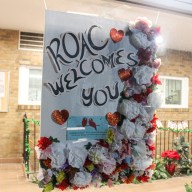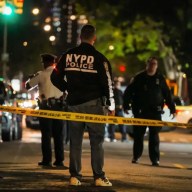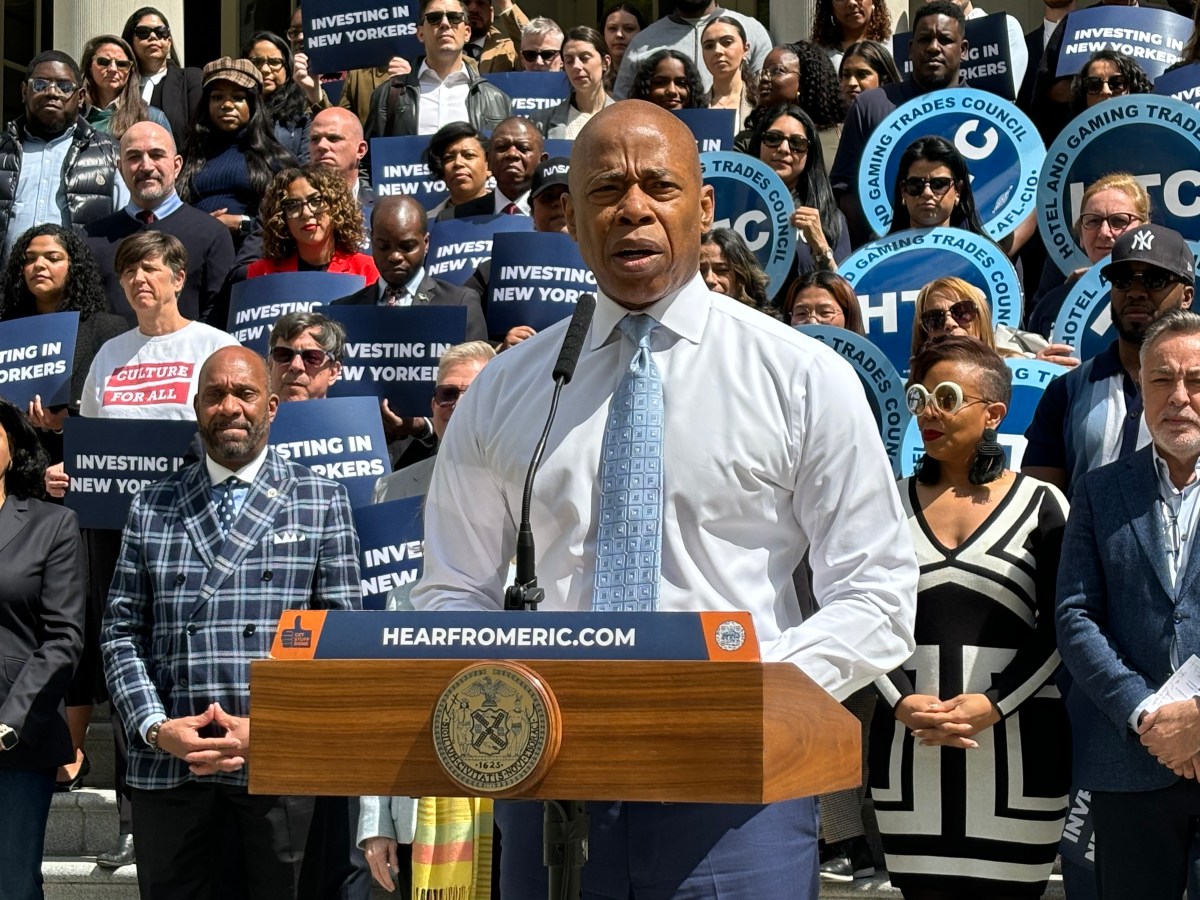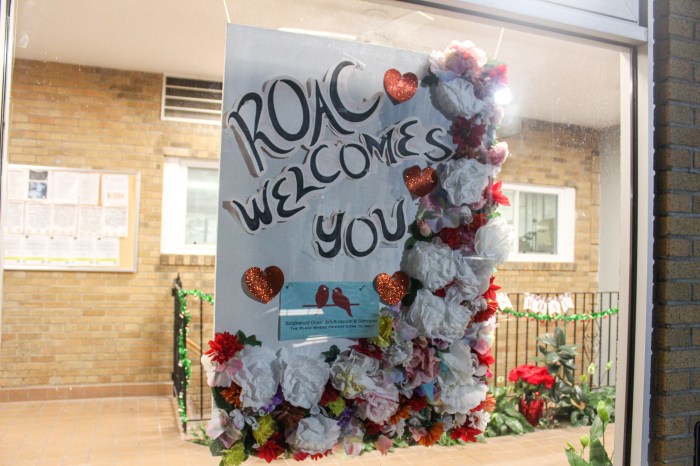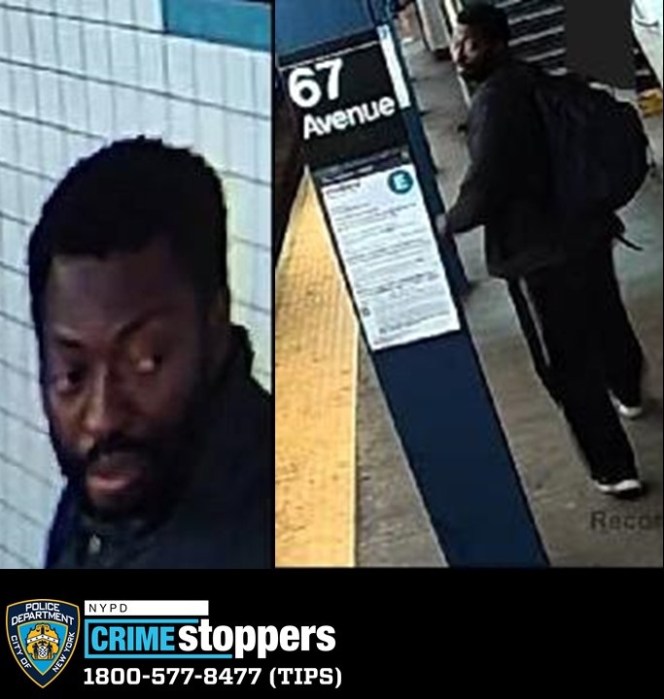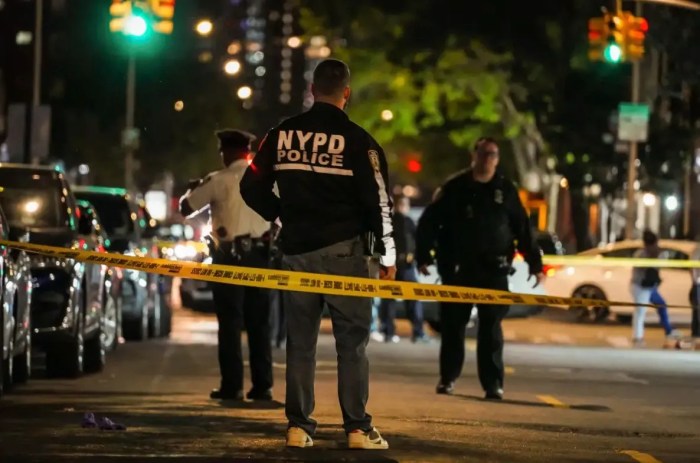By Raphael Sugarman
“Everybody says that,” said Kelty, a lifelong Whitestone resident and until recently the longtime captain of Engine 10/Ladder 10 on Liberty St., the tiny firehouse that withstood the collapse of two 110-story buildings on Sept. 11.
The logo features a caricature of a brave and earnest-looking firefighter, wielding an ax, with one booted-foot perched on each rooftop of the Twin Towers.
“Yeah, it looks like him in his younger days,” chided a fellow firefighter.
The remark was more poignant than the two perhaps realized.
Like many of the city's firefighters – still reeling from the loss of more than 340 of their brethren more than two years ago – Kelty has been straddling the worlds of remorse and resolve.
For months after the attack, he carried his dress uniform in the trunk of his truck to attend a torrent of funerals, including memorials for six men from his House: Paul Pancini, Jeffrey Olsen. Lt. Stephen Harrell, Sean Tallon, Greg Atlas, and James Corrigan, a retiree from the department, who was working as a safety officer in the Trade Center on the day of the attack.
But with his firehouse turned into an emergency command center less than 24 hours after the attack, Kelty could not afford to wallow, having to spend long days securing the area and inspecting buildings, not to mention bolstering the morale of his shaken crew.
“The last two years were very stressful,” said Kelty. “We were operating out of our house and our fire district was in chaos. But we were still required to do building inspections, hydrants, even though our center got destroyed and everything around here was being modified constantly.”
With the news that he had been promoted to battalion chief in Harlem, Kelty also spent the past year mentally balancing his new job as overseer and manager uptown with departing hands-on fire captain downtown.
His late-July appointment as battalion chief was particularly bittersweet, considering that a repaired and refurbished Ten House reopened in early November.
“I was hoping to stay in the house until September or October,” said Kelty. “I figured we would be back in the house. I could try and get some of the kinks out of the system. It didn't happen.”
Actually, juggling jobs comes second nature to Kelty.
When he was not saving lives as a 24-year FDNY veteran – riding for Ladder 136 in Elmhurst, as lieutenant of Engine 205 in Brooklyn Heights, and most recently in Manhattan as captain of Engine 10 – Kelty was still involved with his community. Now 49, Kelty is serving his second six-year-term as chairman of Community Board 7, which covers Flushing, Whitestone, College Point and Bay Terrace.
Doing community board work was a necessary distraction in the months after Sept. 11, he said.
“The support of my board and the staff was just great, too,” said Kelty. “They just kept me busy so I didn't think about the negative things that were going on.”
His father was a Department of Sanitation supervisor. His brothers were a retired first-grade police detective and a supervising city fire marshal. Kelty lives in the same Whitestone house where he grew up.
Kelty and his brother Jimmy had barely teed-off in a charity golf tournament at Douglaston Manor when his fire radio shrieked that a plane had hit the World Trade Center.
The brothers could see both towers burning as they raced toward the Midtown Tunnel, still wearing Polo shirts and golf spikes.
“As we were driving, we were talking about what we (the FDNY) were going to do put this thing out,” said Kelty. “But we never imagined for a second that the towers would come down and so many firefighters would be killed.”
By the time Kelty reached the Ten House around 9:30 a.m., the second plane had hit and Liberty Street looked like a war zone, the streets littered with computer terminals, huge desks and reams of falling paper. Kelty was in the back kitchen of his firehouse when Tower Two imploded.
“It was scary, I gotta tell you,” he said of the collapse that blew out the windows of the firehouse and blew in an avalanche of soot and smoke. “It sounded like another plane was hitting a building. I really didn't think we would survive.”
The fact that not a single metal beam from the either of the huge Tower buildings landed on the firehouse was the biggest miracle Kelty had ever seen in a quarter century as a firefighter.
“We were very lucky. Whatever fell collapsed in a spiral down, instead of off-center where we were,” he said, taking a reporter on a tour of the repaired firehouse.
The house's damaged bricks have been replaced by stainless steel as part of a $3.5 million repair project. The kitchen has been expanded with a separate eating and preparation area. In the center of the room is a stove, painted in fire engine red and embossed with “The Ten House.”
“The guys know they can always reach out to me if they need anything,” said Kelty, with a hint of melancholy in his voice.
“Fighting fires in the neighborhood again made guys feel they were doing what they were trained to do,” he said. “They were back in the world we wanted them to be in. The firefighting world.”







